Sushi Rice ~
Restaurant-quality sticky rice, perfect for homemade sushi!
Yields 4 sushi rolls.
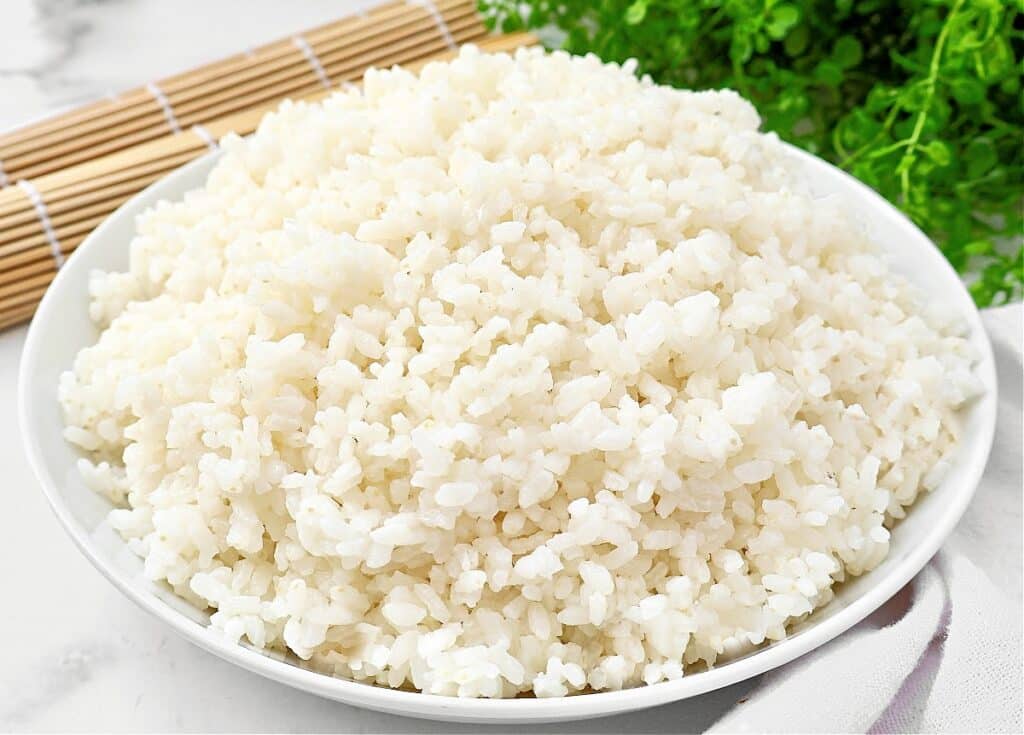
Easy Sushi Rice Recipe
Making perfect sushi rice might seem like a daunting task, but with a few easy steps and simple ingredients, you’ll be skipping the sushi restaurant and making homemade sushi rolls like a pro!
I like this delicious sushi rice recipe because it produces perfectly cooked rice with just the right balance of sweetness and acidity. The step-by-step instructions are easy to follow, and the tips provided ensure that the rice turns out fluffy and sticky every time.
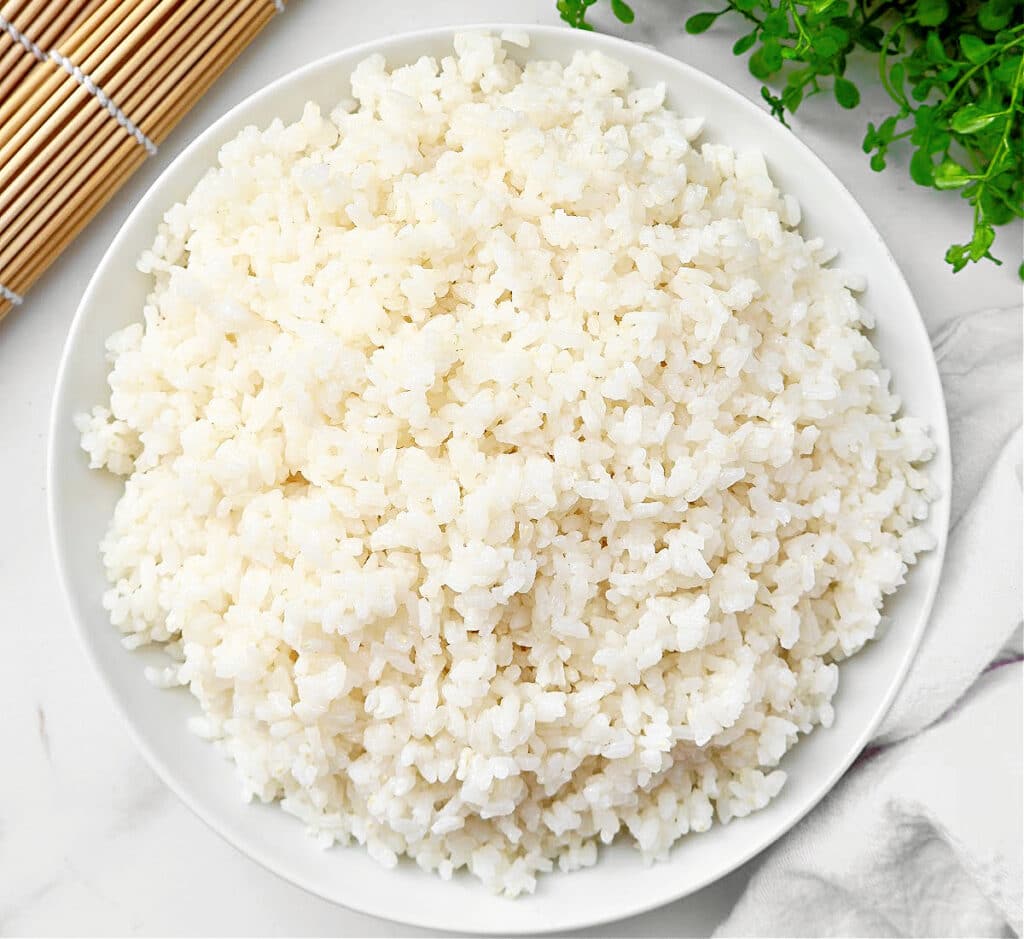
Ingredients for Sushi Rice
You will need the following:
- 2 2/3 cups water
- 1 1/3 cups short-grain rice
- 2 tablespoons unseasoned rice vinegar
- 1 tablespoon granulated sugar
- 1/2 teaspoon salt
Ingredient Notes
- Water – Starting with cold water is essential as it allows the rice grains to absorb water gradually, resulting in a fluffy texture.
- Short-Grain Rice – The type of rice you use is crucial. Opt for short-grain Japanese rice, commonly labeled as “sushi rice.” This glutinous rice has a higher starch content that yields the sticky texture essential for authentic sushi rice. Medium-grain rice or long-grain rice won’t yield the same results.
- Unseasoned Rice Vinegar – Be sure to use unseasoned rice vinegar to avoid altering the flavor profile of your sushi rice. Seasoned vinegar is not recommended because it contains added sugar and salt, which could throw off the balance of flavor. Apple cider vinegar is also not recommended.
- Granulated Sugar – A touch of sweetness enhances the flavor of the rice and complements the other ingredients in your sushi roll.
- Salt – A pinch of salt adds depth to the rice and helps balance the sweetness of the sugar.
How to Make Sushi Rice
STEP ONE: Rinse the Rice (Optional). Place the rice in a fine mesh strainer or colander and rinse it under cold running water, stirring gently with your fingers or a spoon. Continue rinsing until the water runs clear, indicating that most of the starch has been removed. (Rinsing helps remove excess starch from the surface of the rice grains, which can result in a cleaner, fluffier texture once cooked. Some sushi rice brands are pre-rinsed or partially rinsed, so check the package for instructions.)
STEP TWO: Prepare the Rice. In a large saucepan, bring the water to a boil. Stir in the rinsed rice, then reduce the heat to low. Cover the saucepan and simmer for 20 minutes, or until the rice is cooked and the water is absorbed. Remove from the heat and let the rice steam, covered, for 10 minutes to firm up and absorb any excess moisture.
STEP THREE: Season the Rice. While the rice cooks, in a small bowl, whisk together the rice vinegar, sugar, and salt until the sugar and salt are fully dissolved.
STEP FOUR: Incorporate the Vinegar Mixture. After the resting period, gently fold the vinegar mixture into the cooked rice until evenly distributed. Be careful not to mash the rice; you want to maintain its fluffy texture.
STEP FIVE: Cool the Rice. Transfer the seasoned rice to a baking sheet and spread it out evenly using a rice paddle or spatula. Let the rice cool to room temperature, about 30 minutes. As it cools, it will develop a slightly sticky texture, perfect for rolling sushi.
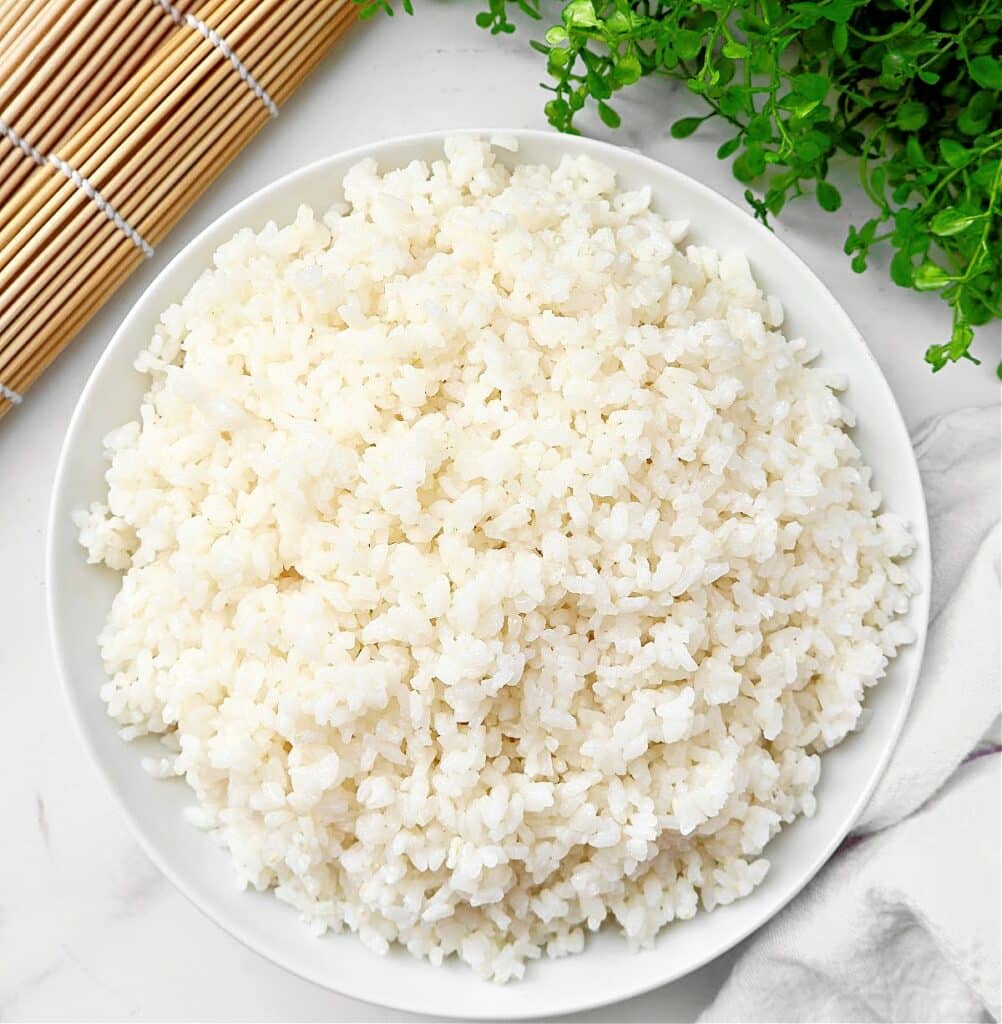
Tips for Success
- Use a Wooden Spoon or Silicone Spatula: When mixing the vinegar mixture into the rice, use a wooden spoon or silicone spatula for gentle folding. Avoid using metal utensils, as they can react with the vinegar and affect the taste of the rice.
- Don’t Overmix: When incorporating the vinegar mixture into the rice, use a gentle folding motion to avoid mashing the grains. Overmixing can result in mushy rice, which won’t hold up well in your sushi rolls.
- Cool Completely: Ensure the rice cools to room temperature before using it for sushi. Hot or warm rice will steam the nori (seaweed sheets) and make it soggy, compromising the texture of your rolls.
- Use Immediately: Freshly made sushi rice is at its peak flavor and texture. For best results, use the sushi rice immediately after it has cooled.
- Cover the Rice: Use a damp towel to cover the sushi rice while you’re working on other components, such as prepping veggies, for your sushi rolls. This small extra step prevents the rice from drying out before you’re ready to assemble your sushi rolls.
Sushi Filling Ideas
There are endless possibilities for building your favorite sushi roll with vegan and vegetarian sushi fillings. Here are some of my favorites:
- Shiitake Mushrooms: Sliced and sautéed shiitake mushrooms have a rich, umami flavor and a “raw fish” meaty texture that’s perfect for sushi rolls.
- Tempura Vegetables: Lightly battered and fried vegetables, such as sweet potato, zucchini, or bell pepper, add a crispy contrast to the soft sushi rice.
- Spinach: Steamed or blanched spinach leaves provide a tender and nutritious filling with a subtle, earthy taste.
- Pickled Radish: Tangy pickled radish slices add a burst of flavor and a satisfying crunch.
- Mango: The sweet and tangy flavor of mango slices adds a tropical twist.
- Kampyo (Dried Gourd Strips): Rehydrated kampyo strips have a chewy texture and a slightly sweet taste. Look for them at Japanese grocery stores or your local Asian market.
- Asparagus: Blanched asparagus spears offer a tender yet crunchy texture and a subtle earthy flavor.
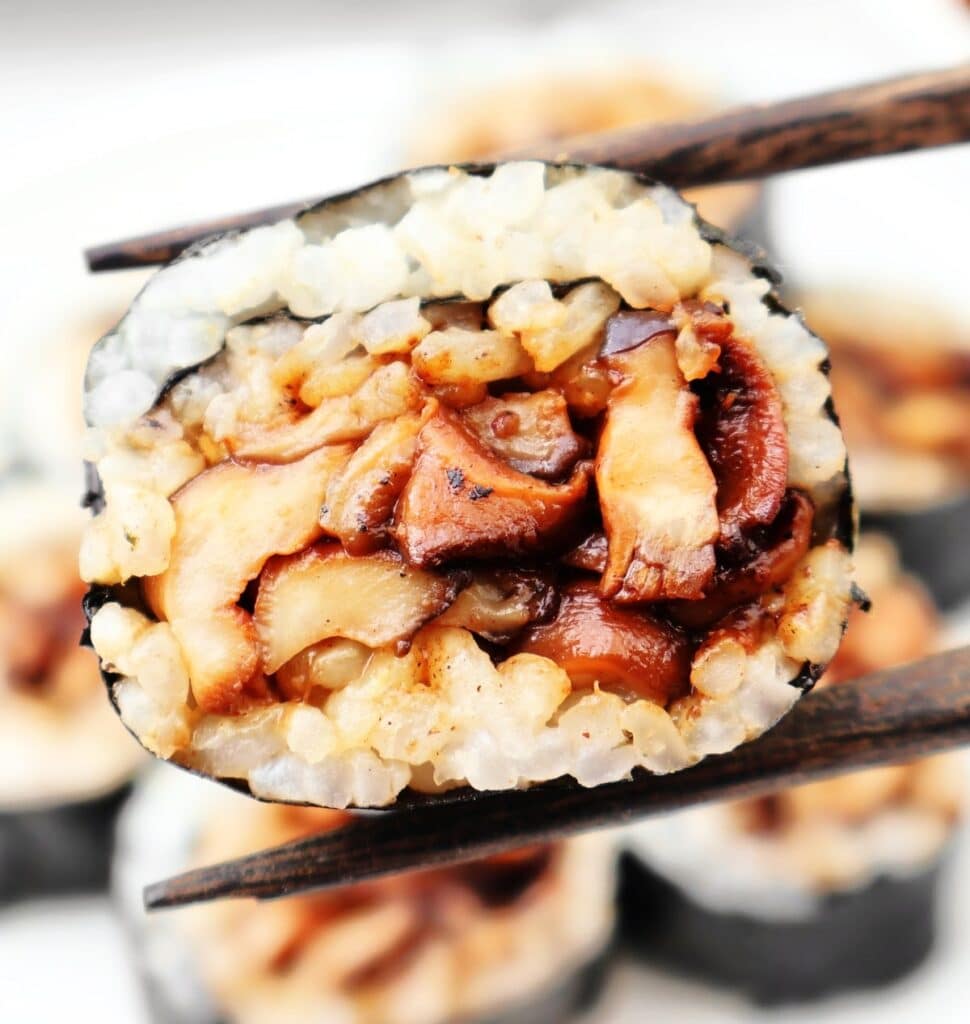
Storage
- To store sushi rice, the first step is to let the cooked rice cool to room temperature. Then, transfer the rice to an airtight container, ensuring it’s clean and dry beforehand. Store in a cool, dark place, such as a pantry or kitchen cabinet, away from heat and direct light sources.
- Do not store in the refrigerator. Refrigeration can harden the rice.
- For best quality, use the rice within 24 hours; prolonged storage can affect its texture and flavor.
More Recipes You’ll Love!
Follow This Wife Cooks on Instagram | Facebook | Pinterest
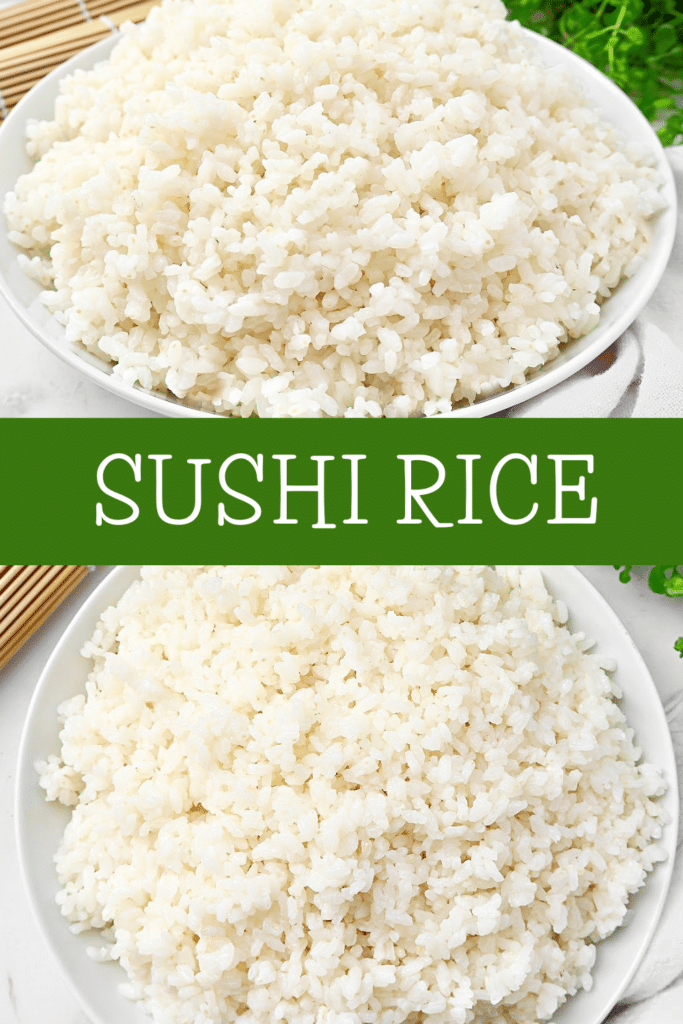
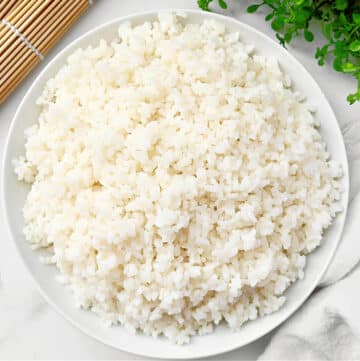
Sushi Rice
Ingredients
- 2 2/3 cups water
- 1 1/3 cups short-grain rice
- 2 tablespoons unseasoned rice vinegar
- 1 tablespoon granulated sugar
- 1/2 teaspoon salt
Instructions
- Place the rice in a fine mesh strainer or colander and rinse it under cold running water, stirring gently with your fingers or a spoon. Continue rinsing until the water runs clear, indicating that most of the starch has been removed. (Rinsing helps remove excess starch from the surface of the rice grains, which can result in a cleaner, fluffier texture once cooked. Some sushi rice brands are pre-rinsed or partially rinsed, so check the package for instructions.)
- In a large saucepan, bring the water to a boil. Stir in the rinsed rice, then reduce the heat to low. Cover the saucepan and simmer for 20 minutes, or until the rice is cooked and the water is absorbed. Remove from the heat and let the rice steam, covered, for 10 minutes to firm up and absorb any excess moisture.
- While the rice cooks, in a small bowl, whisk together the rice vinegar, sugar, and salt until the sugar and salt are fully dissolved.
- After the resting period, gently fold the vinegar mixture into the cooked rice until evenly distributed. Be careful not to mash the rice; you want to maintain its fluffy texture.
- Transfer the seasoned rice to a baking sheet and spread it out evenly using a rice paddle or spatula. Let the rice cool to room temperature, about 30 minutes. As it cools, the rice will develop a slightly sticky texture, perfect for rolling sushi. The rice is now ready for your favorite sushi!

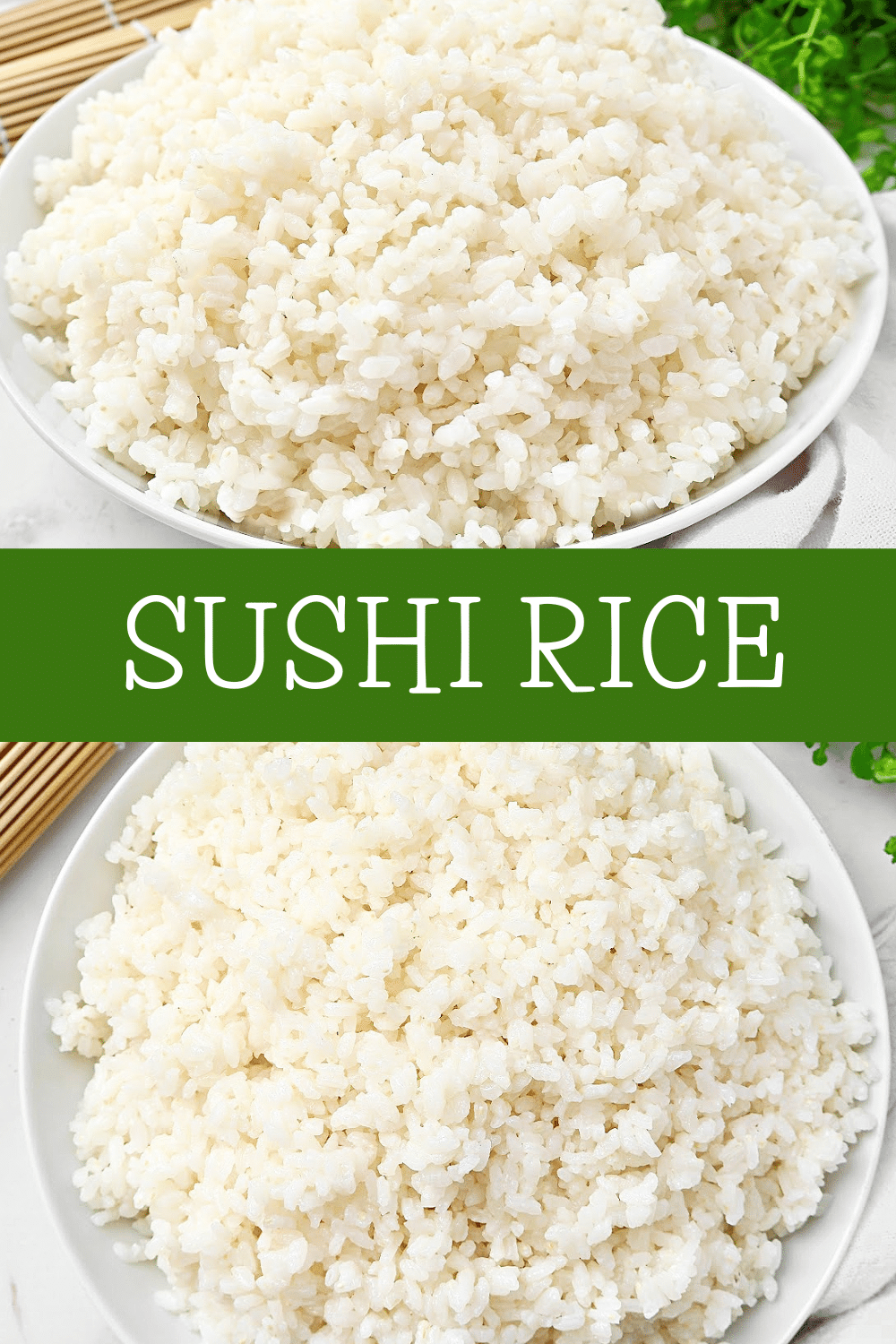

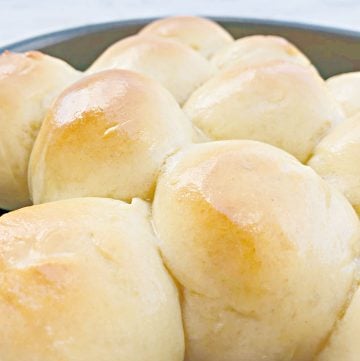



Leave a Reply